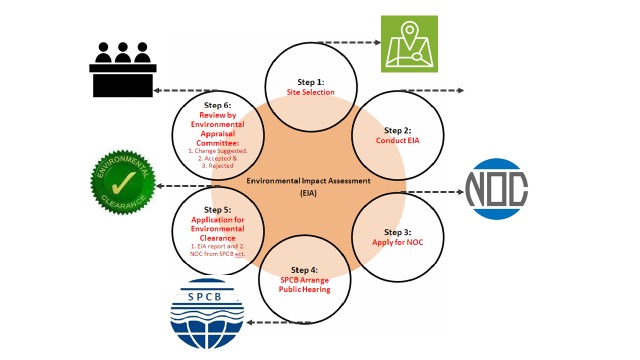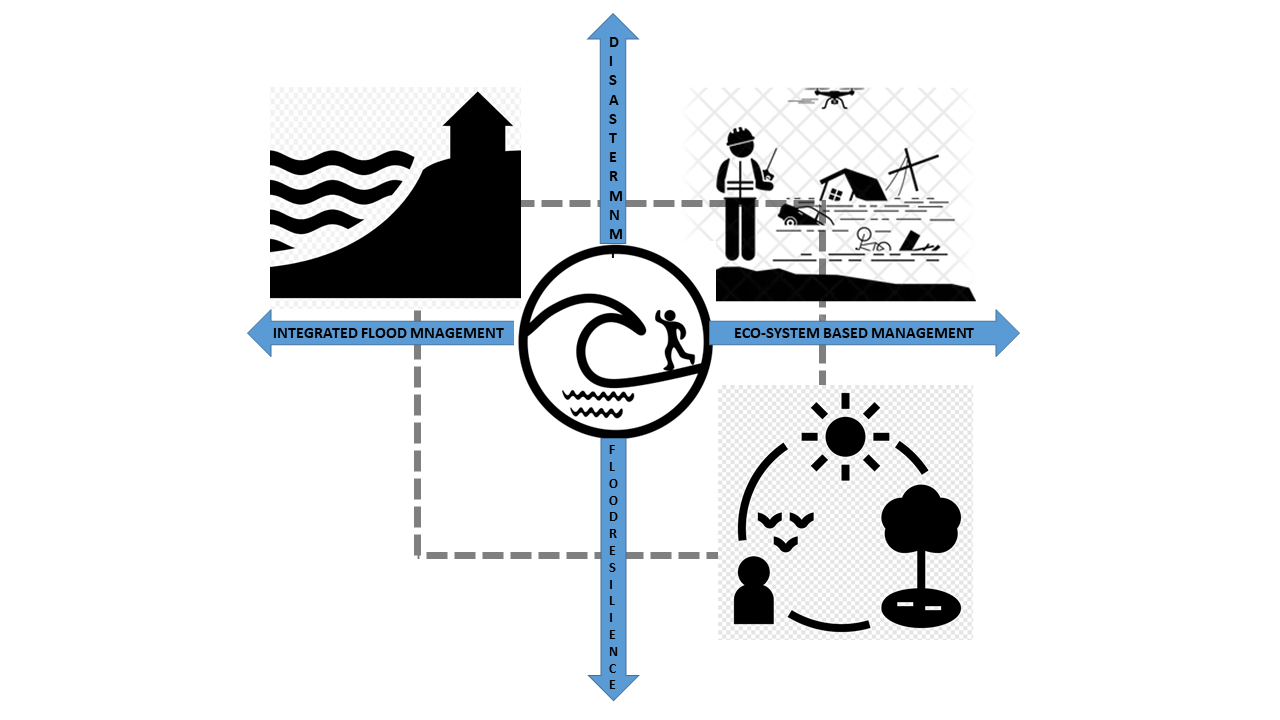Our Services
Advisory Services
Our experience and expertise is in advisory services. We have provided various advisory services to key government bodies and also other non-government organisations in the fields of environment & sustainability.
TYPE OF ADVISORY SERVICES:
- Check on environmental compliance.
- Environmental site assessment for potential environmental issues.
- Environmental audits to identify environmental compliance and implementation gaps.
- Risk and impact assessment through the quality of air, water, and soil.
- Health Safety services.

Air, Water, Noise – Monitoring, Analysis & Modelling
Due to fiscal downsizing, many companies have to outsource their environmental (air, water and noise) monitoring functions. But outsourcing is not a desirable option. The team of Prayukti International can help to develop sustainable environmental monitoring strategies that blends seamlessly with the client’s lean operations.
In addition to reporting the base monitoring results, Prayukti International can be the clients environmental back office, analysing trends, developing statistical matrics, and forecasting using numerical modelling.
Project

Climate Change & Sustainability
We have a multi-disciplinary team to perform any kind of assignment related to climate change and sustainability. We have competency to guide organisations to identify and mitigate risks from climate change. Our key team members have in – depth knowledge in GRI reporting, Carbon footprint, Forestry, ESG, Public health, Social science and Environment.

CSR
CSR is the new field that we are venturing into. We provide END to END support in CSR projects. We are having extensive experienced team members who have handled several CSR projects efficiently.
Our Activities:
1.Consultancy
2.Impact Analysis
3.Due diligence
4.Planning, Implementation and Monitoring the project.

Due Diligence
It is a decision-making tool to find out the gaps of environmental compliance and management system implementation and also prescribes the corrective and preventive action to reduce these gaps.
We have been doing the EA in several countries. Investigation, Understanding and Identification are the three pillars of this decision-making tool.
Outcome
- Mitigation of Adverse Impacts
- Reducing Waste, pollution and energy costs
- Linkage with stakeholders
- Obeying Environmental Compliances
Project

Environmental Impact Assessment (EIA)
In most countries EIA is the cornerstone of the environmental permitting process wherein the multifarious skills of a quality consultant are brought to bear. The aspects addressed during the EIA unless mitigated completely, often manifest as environmental permit conditions.
We have developed EIAs in various countries that address a variety of regulations, project constraints, financial strictures to achieve a sustainable solution aligned with the client’s vision.
Project

Environmental Pollution Control Systems
Environmental pollution control system is a tool to fight against climate change and pollution. At Prayukti, we promote clean and hazard free environment.
- Air Pollution Control Management
- Air pollution management is most essential in today’s world. Technics are required to zero down or minimise air pollution. Otherwise it can cause detrimental effects to society and environment. We have extensive experience to deal with issues related to air pollution in various sectors. We offer low-cost, user-friendly & efficient Air Pollution Control Management services to top global leaders.
- Noise Pollution Control Management
- At Prayukti, we offer efficient tailor made solutions to reduce or eliminate noise pollutions.
- Water Pollution Control Framework
- Prayukti International offers long – term user-friendly sustainable solution to support zero waste process. We have a dedicated team to deal with water pollution and its related issues. Our key experts have vast knowledge & experience to design & implement policies related to water pollution control.
- Waste Management & Control Engineering
- Waste management is the unsung hero of environmental management. Prayukti International has developed 3R (Reduce, Reuse, Recycle) strategies for clients in various industries.
- Prayukti International helps the clients to manage their waste in collection, characterization, segregation, treatment and handling operations. Waste treatment is a necessary work before declaring the waste inert for further transport and handling. Prayukti International helps the clients develop waste treatment operations.

Flood Water Management
Flood water management is an essential tool to survive in this ever changing climate which is effecting the world. At Prayukti, we have vast experiences to design and develop policies related to flood water management.
To develop the policy there are following strategic management is required to measure the risks :
Types of Activities:
- Integrated approach to flood risk management
- Disaster management and disaster risk reduction
- Ecosystem-based management
- Strengthening flood resilience
- Adaptive Management

GIS Services
Prayukti Internationals provide GIS services for client in terms of quick and smart generated mapping techniques.
Type of Activities:
A geographic information system (GIS) is a system that creates, manages, analyzes, and maps all types of data. GIS connects data to a map, integrating location data (where things are) with all types of descriptive information (what things are like there). This provides a foundation for mapping and analysis that is used in science and almost every industry. GIS helps users understand patterns, relationships, and geographic context. The benefits include improved communication and efficiency as well as better management and decision making.

Health & Safety Services
PUBLIC HEALTH CARE
Public Health and Safety
Prayukti assists its clients in addressing addressing some aspects of project activities taking place outside of the traditional project boundaries, but nonetheless related to the project operations. These issues may arise at any stage of a project life cycle and can have far reaching impacts beyond the life of the project. In such cases impacts are not confined to workers only but also affect the health and safety of surrounding communities in the project area.
Fire Prevention: In case of fire risks, there should be Clear, unimpeded escape routes, Smoke control systems, Automatic sprinkler systems, Manual portable extinguishers
Requirements for existing buildings: Facilities, buildings, plants, and structures should be situated to minimize potential risks from forces of nature (e.g., earthquakes, tsunamis, floods, windstorms, and fires from surrounding areas).
Traffic safety: Adoption of best transport safety practices with the goal of preventing traffic accidents, Avoiding dangerous routes, Use of speed control devices and remote monitoring of driver actions.
Transport of Hazardous Materials: Projects should have procedures in place that ensure compliance with local laws and international requirements applicable to the transport of hazardous materials which may result in fire, explosion, or other hazards during transportation.
Disease prevention: Preventing communicable diseases by conducting immunization programs in local communities to improve health and guard against infection is important. Reducing the impact of vector-borne disease on the long-term health of workers by controlling larval and adult propagation through sanitary improvements and elimination of breeding habitats close to human settlements is also necessary.
Emergency Preparedness: All projects should have an Emergency Preparedness and Response Plan. This should comprise Communication Systems (Alarm bells, visual alarms, etc.) and Community Notifications (through vehicle mounted speakers).
Emergency Resources: A mechanism should be in place for providing funding for emergency activities.

OCCUPATIONAL HEALTH
HEALTH SERVICES:
Occupational Health and hygiene
Investigation and remediation of contaminated lands requires that workers be mindful of the occupational exposures that could arise from working in close contact with contaminated soil or other environmental media (e.g., groundwater, wastewater, sediments, and soil vapor). Prayukti advises its clients on how to what occupational health and safety precautions should be exercised to minimize exposure and contractors are obliged to implement all reasonable precautions to protect the health and safety of workers.
Fire Precautions: Equipping facilities with fire detectors, alarm systems, and fire-fighting equipment.
Clean eating Areas: suitable arrangements are to be made for provision of clean eating areas where workers are not exposed to the hazardous or noxious substances
First Aid: Appropriately equipped first-aid stations should be easily accessible throughout the place of work. Eye-wash stations, gloves, gowns, and masks should be provided for protection against direct contact with blood and other body fluids.
Mitigating Physical Hazards: Designing machines to eliminate Injury or death from being trapped, entangled, or struck by machinery parts, marking all energized electrical devices and lines with warning signs, storing flammables away from ignition sources and oxidizing materials and using Use spark-proof fixtures to prevent explosions resulting from ignition of flammable materials or gases.
OHS Training: A basic occupational training program and specialty courses should be provided, as needed, to ensure that workers are oriented to the specific hazards of individual work assignments
Working at height: For workers operating at height, fall prevention and protection measures should be implemented.
Active use of PPE: If alternative technologies, work plans or procedures cannot eliminate, or reduce, a hazard or exposure, personal protective equipment are a last resort that is above and beyond the other facility controls

Technical Safety & Risk Assessments
The main objective of QRA is to make quantification of the risk involved in the operations in the chemical industries and processes. The evaluation is a four step process with Hazard Identification, Consequence analysis, Frequency estimation and Risk analysis/Risk assessment.
Identification of hazard involves identifying the probable scenarios or areas for possible loss of containment in the plant. The effects of the loss of containment in terms of damage distance, concentration, heat flux, over-pressure are assessed in consequence analysis. Taking into consideration of frequency of failure, the risk value is calculated and suggestion is offered in the report for reducing and mitigating the risk.
HAZOP study is the assessment on adequacy of safety measures taken by industries vis-a-vis the hazards present and is primarily carried for process industries. Any plant operation may involve deviation from design parameters. HAZOP study is a structured methodology to identify all possible deviations of the process parameters namely temperature, pressure, composition, direction of flow etc, and all the consequences associated with each deviations. The deviation is also correlated to the safety interlocks, instrumentation and administrative procedure related to the operation.

Additional- Manpower Service
Prayukti has capabilities and expertise to provide specialist human resources to government and non-government organisations in India and abroad to run their activities in environment and sustainability sector.


Social & Livelihood
Prayukti Intl. has provided advisory services, supervision consultancy, research and survey services,and manpower support. Here are the following activities:
Project